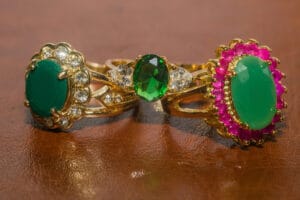If you’re a jewelry fan, you must’ve heard about the iconic Victorian rings from 1837 to 1901, which are making a comeback today. But these are no longer just an accessory; Victorian rings have become a highly collectible antique that can actually be worth tens of thousands!
This list will show you 14 examples of the most valuable antique Victorian rings with tips and tricks to spot them and their average worth today! Who knows? One of these vintage rings may already be there in your jewelry box!
Why Are Collectors Hunting Victorian Rings?
Victorian rings are extremely valuable and sought after today since they’re truly antique items from 1837-1901, created when craftsmanship was manual. They manually worked with real gold, silver, and high-quality gemstones, unlike machines used to manufacture today’s jewelry.
Most of them have one-of-a-kind designs, such as snakes, mourning emblems, or even detailed engravings that you can no longer see today. Their age, solid construction, and historical connection to Queen Victoria’s era make them solid investments!
Let’s take a look at some of the most valuable antique Victorian ring styles that are surprisingly valuable considering they’re over 100 years old!
1. Rose Gold Emerald Rose Cut Diamond Cluster Ring
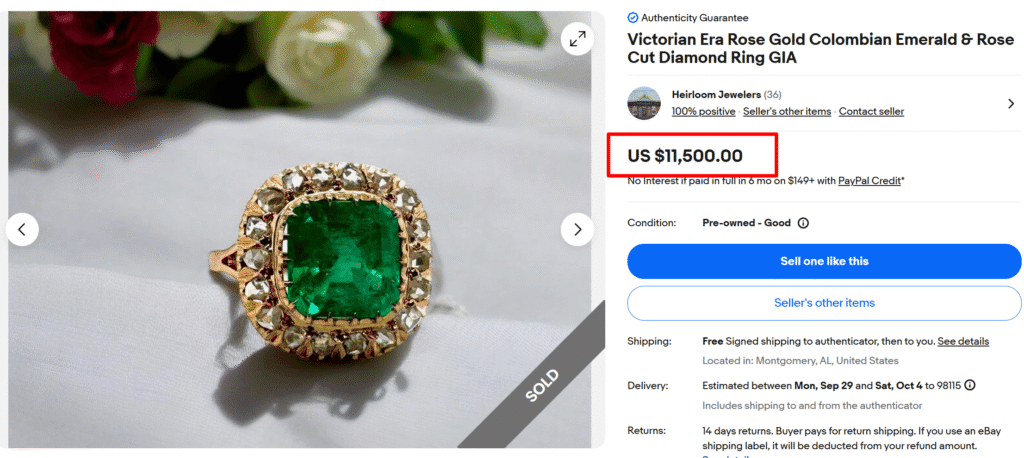
The Victorian cluster ring has a central, prominent gemstone surrounded by a “cluster” of smaller stones, creating that classic look collectors interestingly seek today. It was among the most sought-after styles during the period and tended to feature diamonds, sapphires, pearls, or rubies in gold.
Depending upon the gemstones and gold purity, the price of antique cluster rings can vary from $1,000 to command up to $10,000. Like this example with a large Colombian emerald and rose cut diamond cluster sold for an astonishing price of $11,500!
2. Gold & Silver Old Marquise Diamond Halo Ring
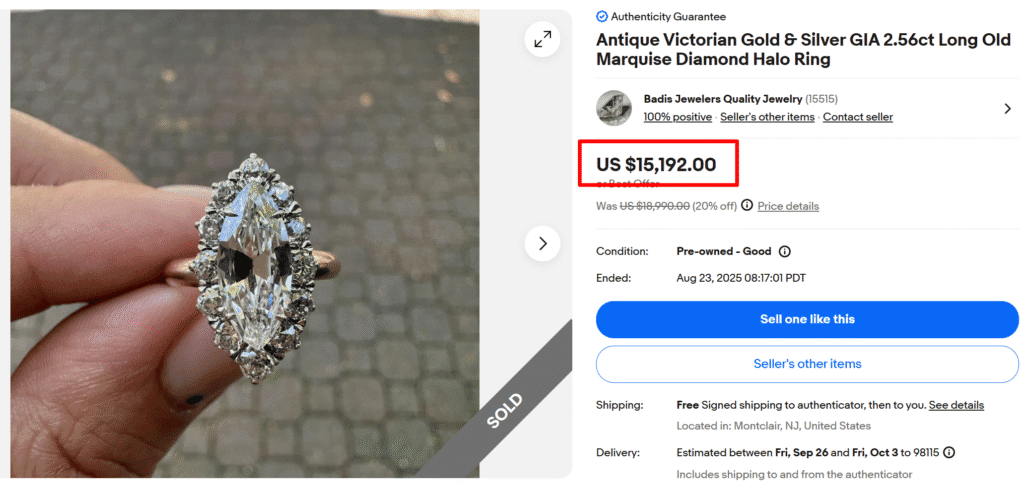
The elongated and pointed marquise cut was very popular for ring wear in the late Victorian period. Pairs of pieces often have a large central marquise diamond surrounded by small old-cut stones in gold or platinum, but individual marquise stone rings are also found.
The value of such rings depends on the type of stone. For example, the high value of over $15,000 for this example is due to the halo of smaller old-cut diamonds surrounding the massive old marquise diamond, all set in gold and silver!
3. Memento Mori Skeleton in Coffin Gold Enamel Locket Ring
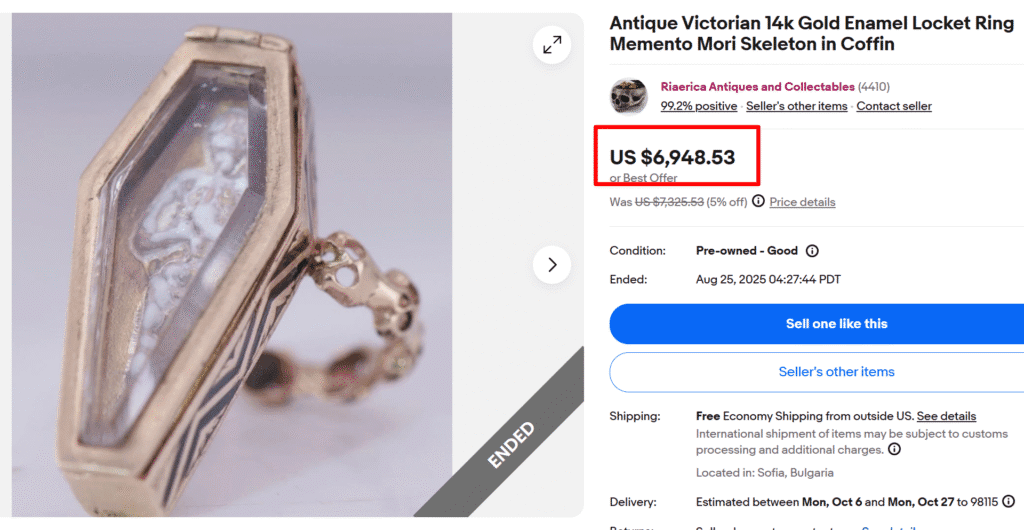
“Memento Mori,” Latin for “remember you must die,” is a Victorian period fashion jewelry style. Such rings were pieces of mourning jewelry, containing a small compartment within to store a deceased person’s lock of hair.
They are valuable based on historical significance and workmanship, such as enamel, precious gems, and good gold like 14K or 18K.
4. 18K Gold Diamond Pink Sapphire Serpent Ring
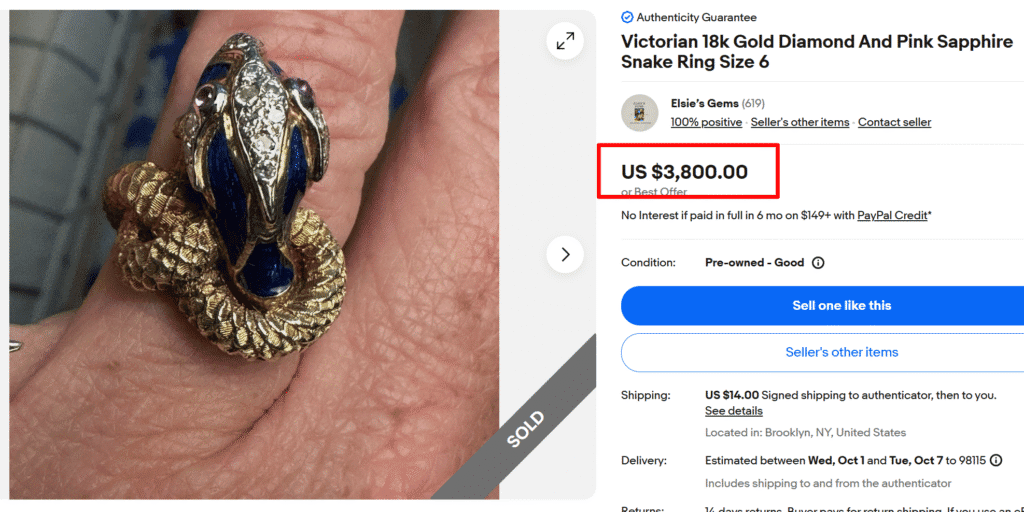
Queen Victoria made serpent jewelry popular after Prince Albert gave her a snake engagement ring. The snake meant eternal love and wisdom back then. They’re usually gold with gemstone eyes, like emeralds, rubies, or diamonds.
Victorian snake rings with rare gems and detailed scale work in 14k or 18k gold can go up to a few thousand dollars, like this diamond and pink sapphire example!
5. Georgian Black Enamel Mourning Ring
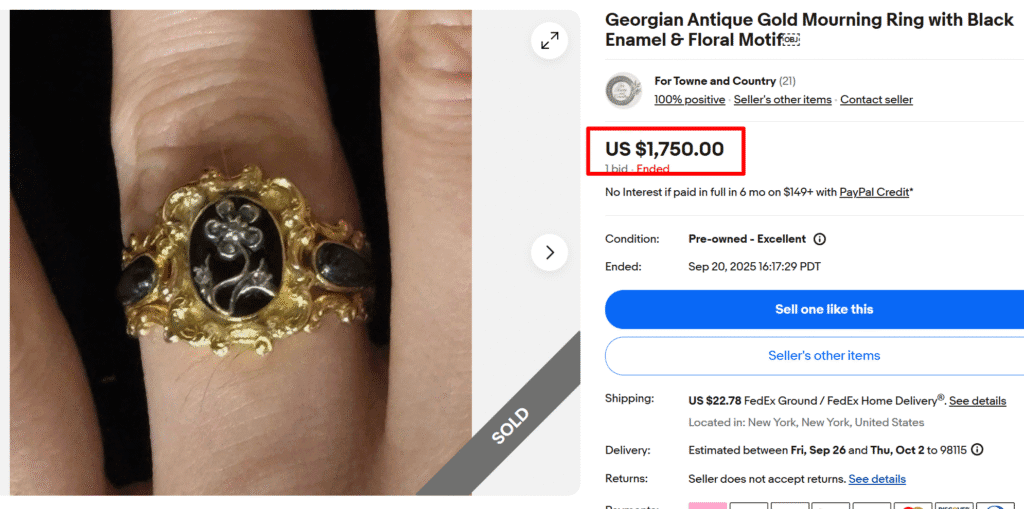
This is another example of Victorian mourning rings, which feature polished black enamel, often with names, dates, or messages engraved. Some examples may have small seed pearls to represent tears. Antique pieces with clear, undamaged enamel and detailed engravings and designs can be worth a few hundred to a couple of thousand dollars.
6. 18K Gold Handcrafted Dragon Natural Old Cut Diamond Ring
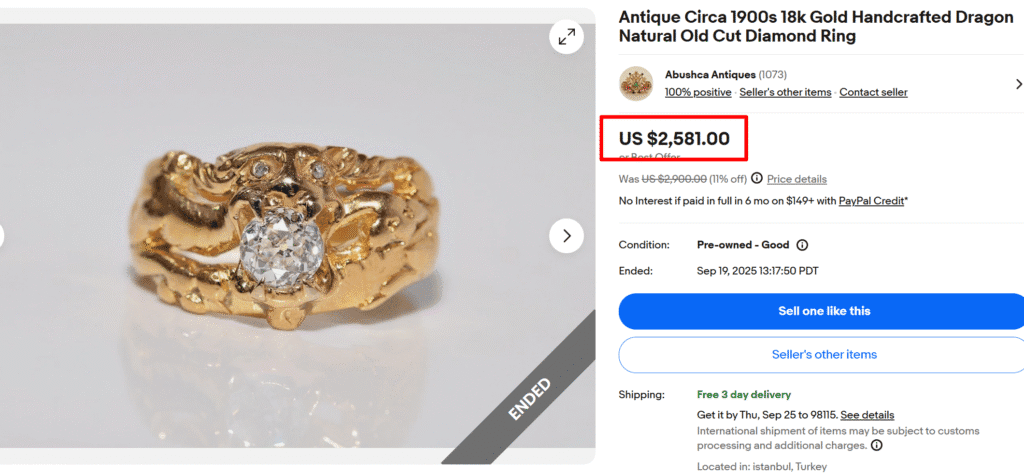
Dragon designs were uncommon in Victorian jewelry, representing power and protection. These are rare finds with unique designs and skilled craftsmanship. Natural old-cut diamonds and high-karat gold settings indicate expensive, custom pieces. The rarity and material quality make these worth high thousands or more.
7. Rosy Gold Old Marquise Diamond Solitaire Ring
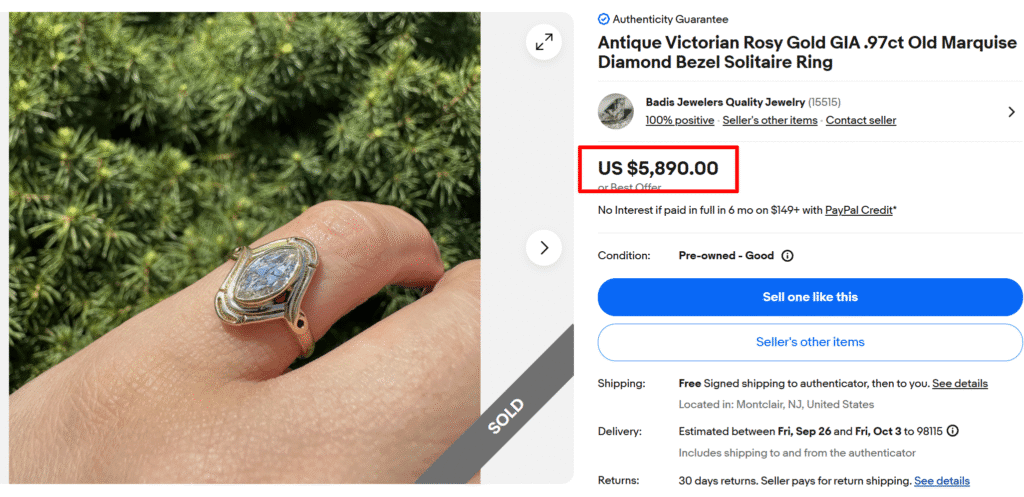
As the name says, the solitaire rings feature a single, dominant gemstone, most often a diamond. These were pretty popular among Victorians as they focus on the beauty of a single stone.
Rings with a large old mine cut and old European cut diamonds are among the most valuable solitaires. A classic Victorian diamond solitaire can be worth several thousand dollars, depending on the diamond’s size and quality.
8. 14K Gold Crest Coat of Arms Armorial Shield Signet Ring
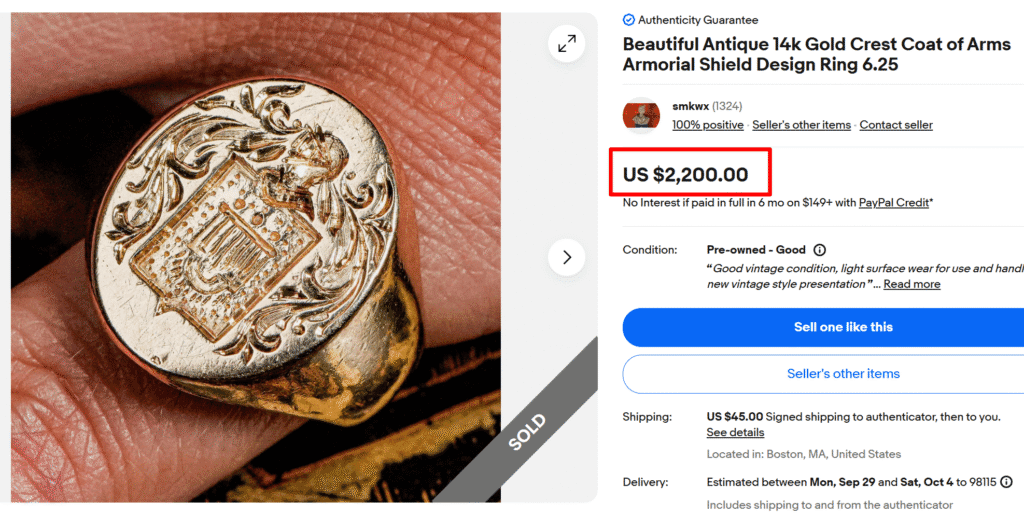
Antique signet rings are like customized pieces from history. They usually feature a unique symbol, letters with a family crest, or initials. These were used like a wax sealer with a personal signature, and were like a popular jewelry item.
Often made of heavy gold, these rings feature a flat surface, or “bezel,” for a carving. However, some examples may also show a clear, intricate intaglio carving on stones like carnelian, lapis lazuli, or bloodstone. The value of Victorian signet rings changes with the carving quality and the metals.
9. 14k Gold Coral Cameo Cocktail Ring
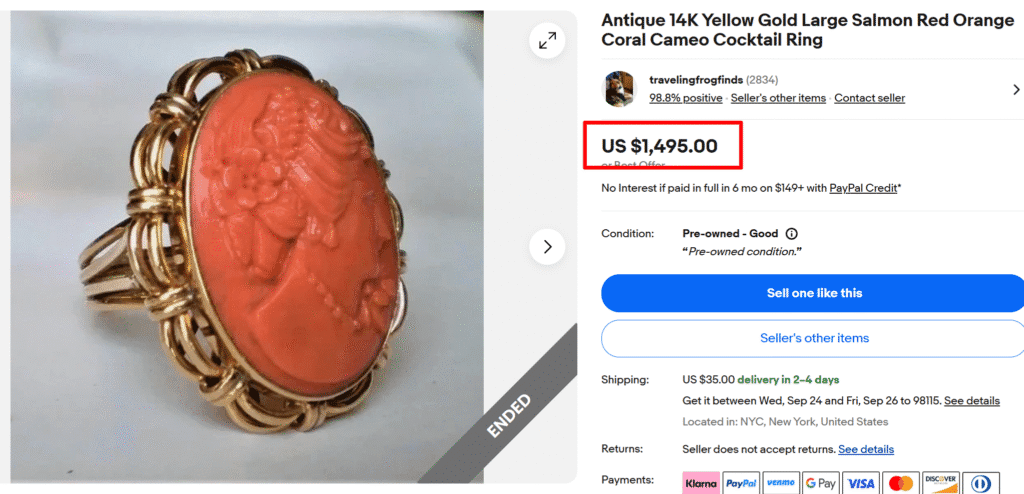
A Victorian cameo ring, with carved portraits in relief, is one of the Victorian jewelry items most cherished by people. They were commonly constructed using shells, coral, or agate, mounted in precious metals like gold and silver.
The most highly prized cameo rings are ones with lots of detail, good contrast between the layers, and a slim profile. And further design elements, such as filigree, gemstone, or enamel work, can add to the cost to a few thousand.
Collectors’ Tip: Look for fine facial features and tool marks to spot a real cameo ring; fake ones look too perfect since they’re molded.
10. Gold Old Mine Cut Diamond Buckle Ring
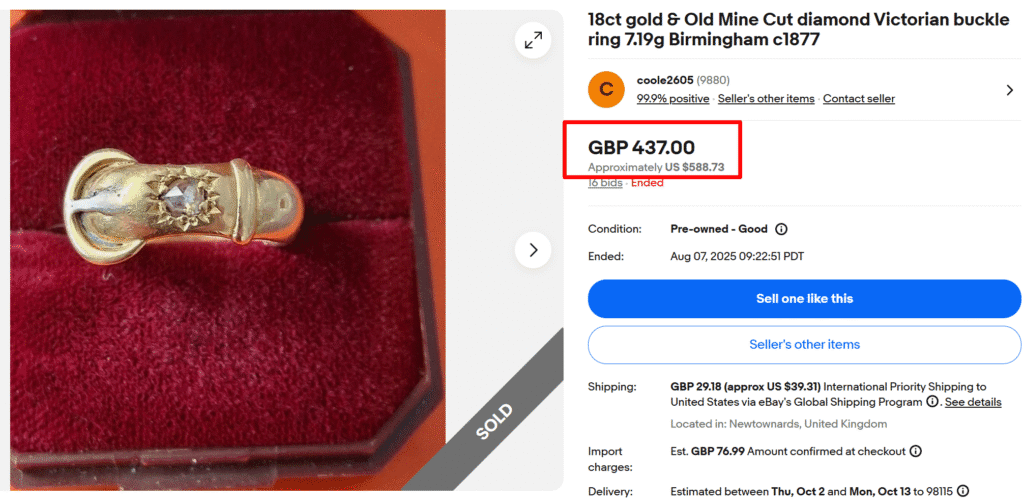
A symbol of eternal commitment and a love that holds fast, buckle rings were popular as both wedding and engagement bands in the Victorian Era. The design features a realistic or stylized buckle, often with intricate engraving, typically on gold.
If you can find pieces in pristine condition with detailed, clear engravings, they can sell for a few hundred to a few thousand dollars, more if there are precious gems. The sentimental meaning and simplicity of these Victorian rings make them very collectible today.
11. 18K Gold Garnet Serpent Ring
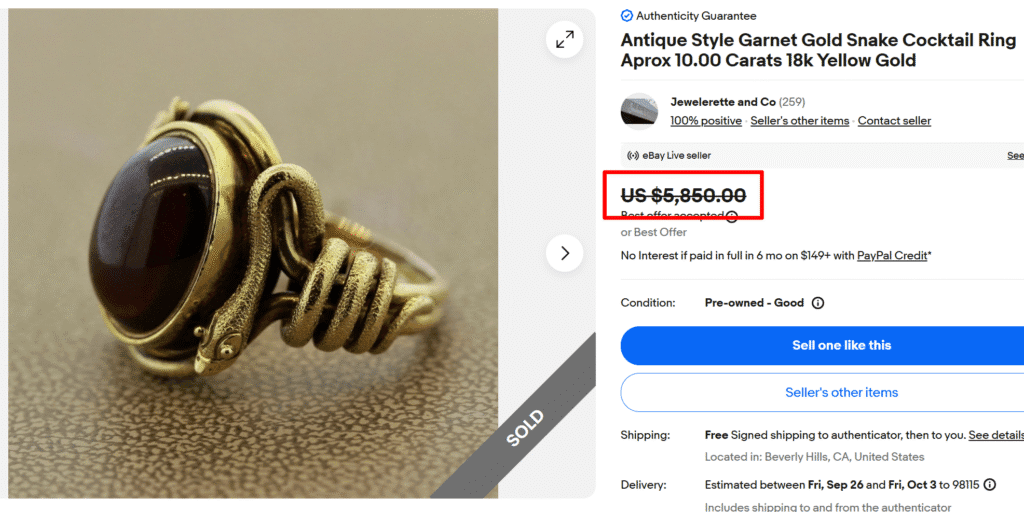
Garnets were a favored gemstone of the early Victorian era, popular for their deep red hue. Rings often had a large gem at the center or a cluster of these gems, sometimes cut into flat-topped “table cuts.”
You can expect very high prices for pieces set in high-carat gold and featuring fine-quality Bohemian garnets and unique designs, like this example; the big garnet, the serpent design, and 18K yellow gold make it worth the high price of over $5,500!
12. 18K Gold Mabe Pearl Screws Cocktail Ring
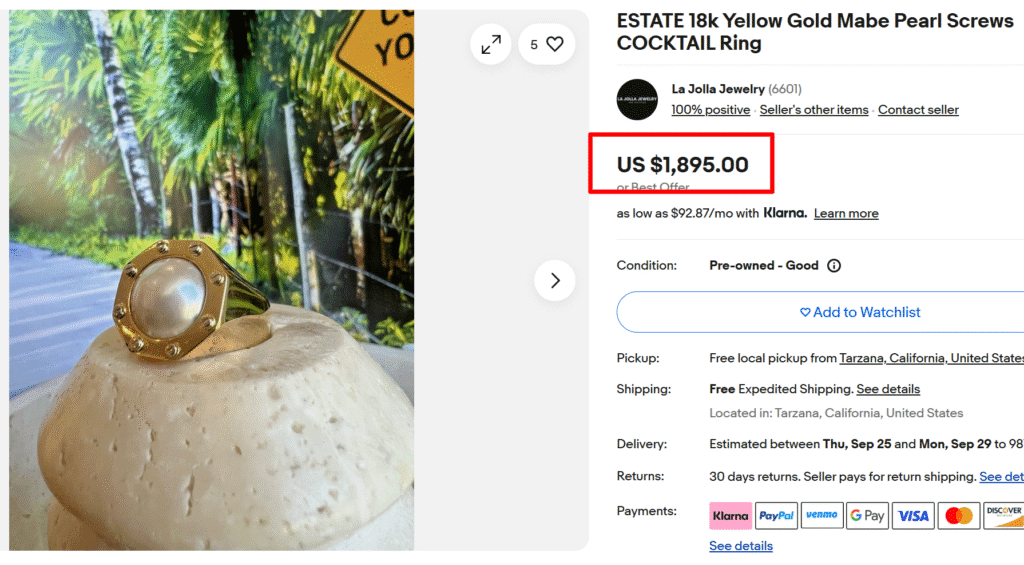
Mabe pearls are half-round pearls grown against mollusk shells. They became popular for large “cocktail” rings with bold, oversized designs, like this massive screw-style ring.
The most valuable rings are those that have original high-luster pearls and high-quality gold, like 14K or 18K. Precious accents like diamonds or other stones can boost the value to several thousand dollars.
13. 9K Victorian Opal Tooth Doublet Ring
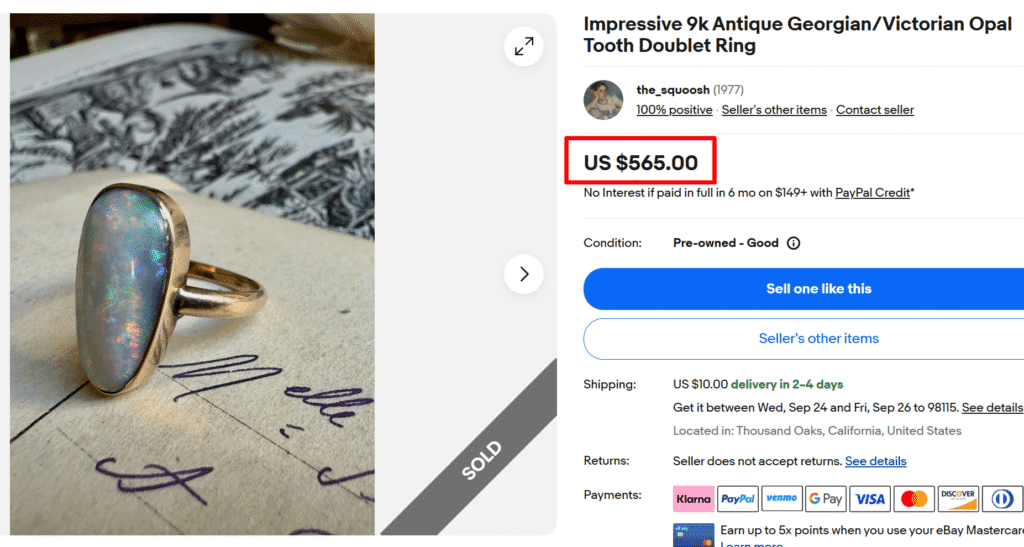
Victorians loved opals for their color play. An opal doublet has a thin slice of natural opal on a dark backing, making colors more vivid and the ring more durable. The best doublet rings have genuine natural opals with strong, varied color play.
Look for opals with wide color spectrums and well-preserved settings. While this example sold for over $560, pieces with other precious gemstones like diamonds can fetch up to $1,000 or even more.
14. 18K Gold Turquoise Cocktail Ring
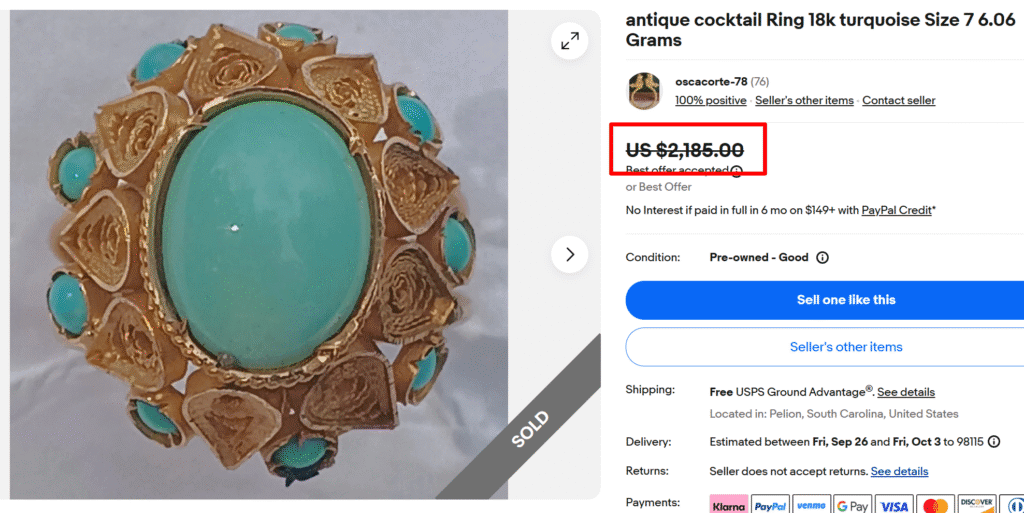
Turquoise was fashionable in the Victorian era, especially later on, for its robin’s egg blue color. Cocktail rings were meant to be large and decorative, often featuring bold turquoise cabochons (smooth, rounded dome cuts).
The most valuable rings have natural, untreated turquoise in elaborate gold settings with diamond accents. Look for a deep, natural blue color. Fine examples can be worth a couple of thousand or more.
Identifying Authentic Victorian Rings (6 Signs to Spot)
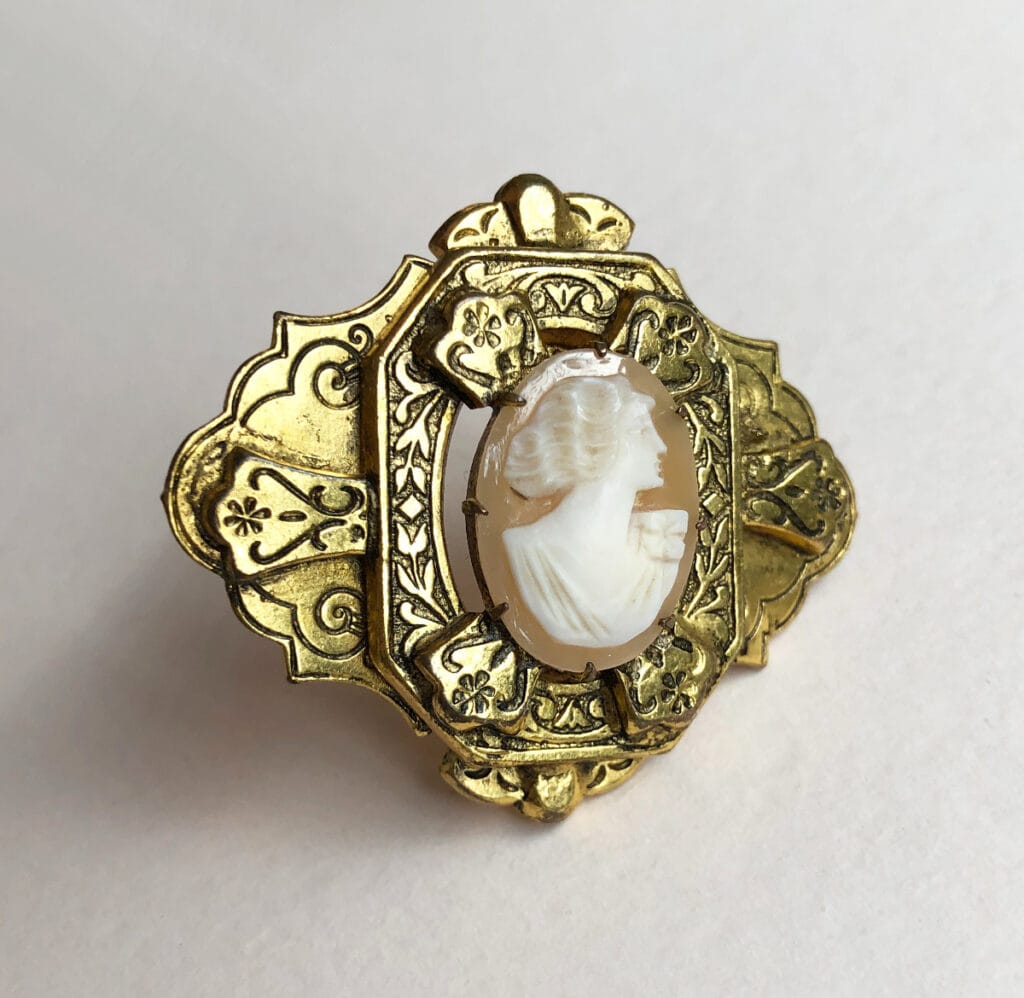
But with reproductions flooding the market, knowing how to identify authentic Victorian rings has become essential. The differences between genuine antiques and modern copies are often subtle, but they’re there if you know what to examine.
Construction
The construction may help you spot authentic pieces a lot more than you’d guess. Victorian jewelers worked entirely by hand, which means you’ll see small variations that machines can’t replicate.
Look closely at prong settings; they won’t be perfectly uniform. Also, hand-engraved patterns will show slight irregularities in depth and spacing. These “imperfections” are actually proof of authenticity.
Metal & Wear Signs
Yellow gold dominated Victorian jewelry, with rose gold running a close second. The gold develops a particular patina over 150+ years; it’s softer looking, slightly darker, with a mellow tone that new gold simply doesn’t have.
Be suspicious of rings that look too bright or freshly polished. While some owners do have antique pieces professionally cleaned, removing all patina, most genuine Victorian rings retain some signs of their age.
Styles
Most of all, Victorian rings are known for their unique style. From snakes to floral scrolls, these pieces show unique designs and patterns that scream Victorian. Some of the most popular designs are:
- Hearts and clasped hands
- Serpents (eternal love symbol)
- Floral designs and leaf patterns
- Black enamel with engraved names or dates
- Skulls and crossbones (memento mori)
- Star and crescent moon patterns
- Ancient cameo portraits
- Greek key designs
Gemstone Cuts & Settings
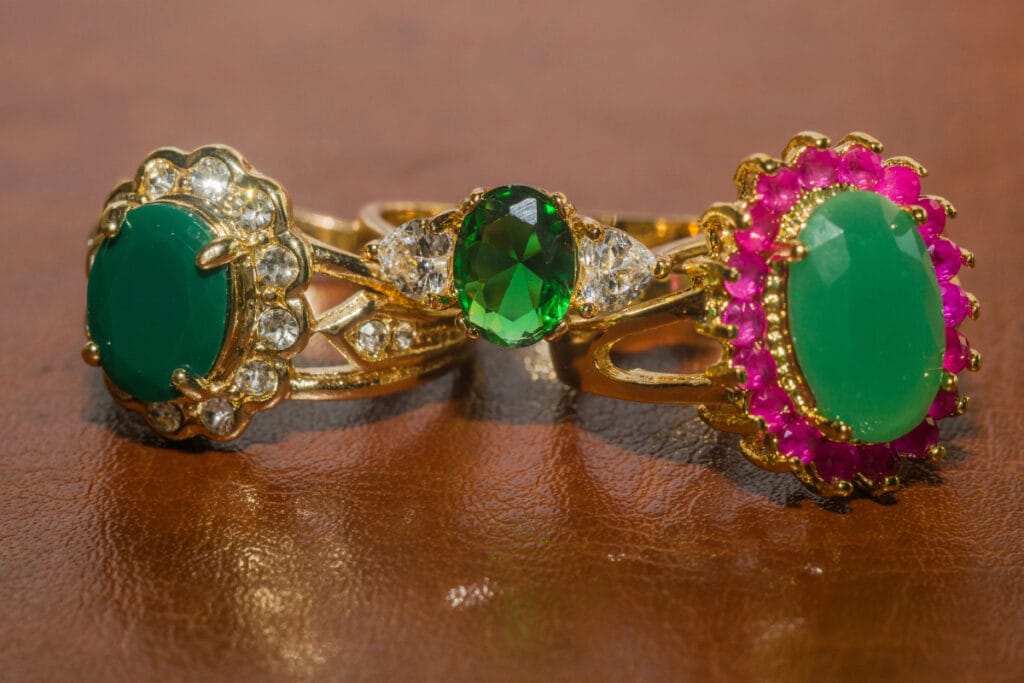
This is a big giveaway! Victorian diamonds were cut differently from today’s stones. You’ll encounter Old Mine Cuts and Old European Cuts, both have larger facets and deeper proportions than modern brilliant cuts.
The sparkle is likely warmer, less intense, with more colored flashes than the white fire of modern diamonds.
Also, pay attention to the setting. Stone settings from the Victorian period often used closed backs, where metal surrounds the pavilion of the gem. This was standard practice then, though it seems odd now, open settings are more popular for more light!
Hallmarks (& Other Marks)
Most genuine Victorian rings made in America weren’t marked at all. But when you do find stamps, they’re usually simple marks, like “14K” or “18K” or “925” without elaborate maker’s marks. These marks will help you verify the authenticity of the materials.
European pieces show their own hallmarks, like the Sun and Crown mark. In some pieces, you may also find the maker’s mark, like “Tiffany & Co.”
Note: This article is intended for informational, educational, and entertainment purposes only. Some images are illustrative and may not represent actual brands, products, or related entities. All trademarks, product names, brand logos, packaging, and other intellectual property referenced remain the exclusive property of their respective owners. Any brand mentions or references are provided solely for descriptive and educational context and do not imply any formal or commercial association.

